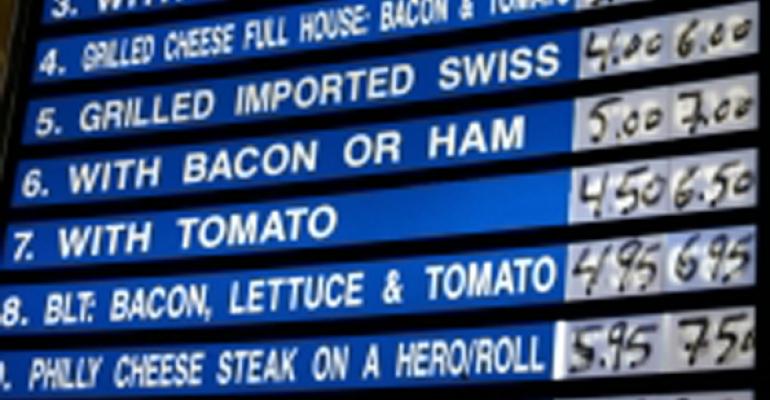Restaurant consumers have altered their expectations for brands’ value proposition and have become a little less deal-driven, according to new research from The NPD Group.
The Port Washington, N.Y.-based research firm has found that, for the 12 months ended in August 2012, non-deal restaurant traffic increased 1 percent in the United States while restaurant visits tied to a deal decreased 1 percent. It was the second consecutive 12-month period in which non-deal traffic grew 1 percent, after remaining flat in the period ending August 2008 and declining by 3 percent in both 2009 and 2010.
RELATED
• NPD: Europe trails in 2Q restaurant spending and traffic
• Early holiday shopping forecasts suggest good news for restaurants
• More restaurant industry finance news
Deal-related visits had declined in the 12 months ended in August 2011 as well, by 2 percent, though that kind of frugality-motivated traffic had increased by 3 percent in 2008, 2009 and 2010, as the Great Recession and its hangover sent consumers running toward daily deals, value and dollar menus, and combo meals.
The NPD Group noted, however, that while overall deal-related traffic is down, much of that decline has to do with consumers perceiving some of the same ordering habits, especially get combo meals, as part of a restaurant’s regular price-value equation and not as a special promotion.
“In 2008, when economic concerns caused many consumers to stop some of their discretionary restaurant visits, many restaurant operators turned to offering consumers more deals to drive traffic,” Bonnie Riggs, The NPD Group's restaurant analyst, said in a statement. “As has been historically the case, when deals are in the marketplace for an extended period of time, consumers tend to expect them or see them as the everyday price and not as a deal.”
In fact, orders of combo meals are increasing, but consumers are increasingly identifying the visit on which they ordered the combo to be unrelated to any deal. Orders from dollar or 99-cent value menus have fallen in the 12-month period, The NPD Group found. Yet other kinds of deal-oriented offers, such as coupons, single-item discounts and senior citizen discounts, increased slightly.
Striking the right balance
As a result of changed customer expectations and perceptions, restaurant brands are finding that they must strike a better balance between value-driven traffic and the rest of the customer experience. McDonald’s Corp. exemplified a need for that balance during its third-quarter earnings call, when officials said that the company's response to disappointing sales and net income would be to drive traffic and market share through better promotion of its value platform.
Chief executive Don Thompson said McDonald’s would not only put more advertising dollars behind its main value platforms, but also would shift the focus of that advertising from the Extra Value Menu back to the Dollar Menu and Breakfast Dollar Menu. The former strategy was meant to highlight some higher-margin items priced between the Dollar Menu and Extra Value Meals, but Thompson said “that didn’t resonate as strongly with consumers as we thought.”
The entire value platform represents about 10 percent to 15 percent of McDonald’s sales mix in the United States, Thompson said, so the brand would need to apply an all-of-the-above approach to turn earnings around. That means continuously balancing value items with premium limited-time offerings like the Cheddar Bacon Onion sandwich and operations initiatives like double drive-thrus and extended hours of service.
Riggs advocated a similar approach, in which restaurants try to drive traffic not just through price-point promotions, but also through every facet of the customer experience.
“What should operators do?” Riggs asked. “Examine their value proposition, not just in terms of prices but also in quality and service; leverage the convenience factor of restaurants; and offer variety, all three of which consumers have consistently told us are important to them.”
Another publicly traded restaurant brand, Red Robin Gourmet Burgers, reported recent success by combining that everyday-value approach with menu variety. In its third-quarter earnings call, chief executive Steve Carley credited Red Robin’s Tavern Double cheeseburger platform with driving increased traffic and a same-store sales gain of 1.1 percent.
The platform begins with a plain double cheeseburger for $6.99, a value-conscious price point for casual dining, and allows customers to upgrade for $1 to several different flavor profiles.
The NPD Group based its report off the findings of the firm’s CREST service, which tracks consumption patterns from more than 400,000 restaurant visits per year.
Contact Mark Brandau at [email protected].
Follow him on Twitter: @Mark_from_NRN





